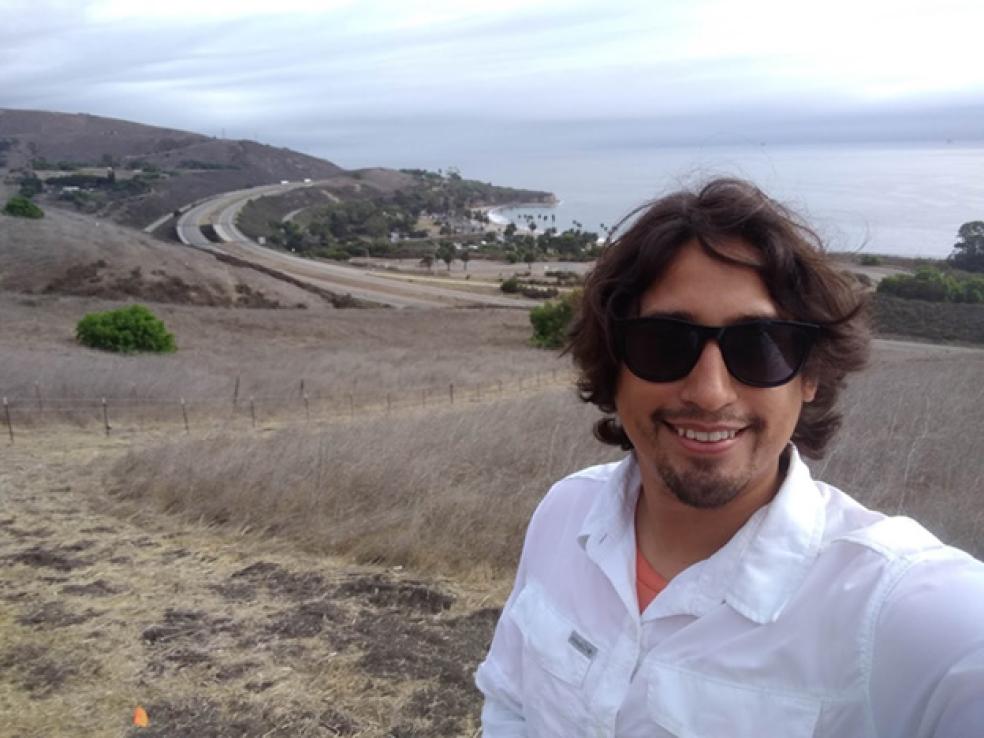
Ariel DeLara transferred to Cal Poly Humboldt with an associate's degree in liberal arts with an emphasis on math and science. Still, his academic interest shifted towards rangeland science thanks to the encouragement of Rangeland Resource Science professor Susan Edinger Marshall.
During his time as a Rangeland Resource Science student, he had the opportunity to explore the wild landscapes of Northern California through hands-on learning experiences and field trips. He went on camping trips and field excursions where he witnessed the wonders of nature and gained a deeper understanding of ecological processes.
“Once, we visited an experimental range managed by one of the UCs in the mountains, which was only accessible to college students with a permit. We had the place all to ourselves and found some salmon in the nearby creek. We thought we heard some bears in the distance one night, but it didn’t make us nervous. The next morning, we found salmon bones just 50 yards upriver where a bear had eaten them, and we felt like we were really in the forest, unlike most overcrowded campsites. It was a cool and slightly scary experience that stayed with me,” DeLara says.
After graduating, DeLara pursued a fulfilling career as a district conservationist for the Natural Resource Conservation Service, providing technical and financial assistance to private agricultural operations. His work reflects Cal Poly Humboldt's influence, instilling in him a deep commitment to environmental stewardship and conservation.
“It's cool to work for an agency that provides funding and helps farmers and ranches to be more environmentally friendly. We help them save water, reduce the amount of pesticides used on their properties, and create pollinator habitats. Everything I do as a district conservationist is toward the goal of conservation, and I love that,” DeLara says.
He is currently working with the Monterey Bay National Marine Sanctuary Foundation to enhance the water quality of Monterey Bay and protect it from contaminants from Salinas Valley croplands. His work aims to conserve the wildlife habitat of Monterey Bay and ensure its sustainability.
DeLara hails from the Coachella Valley, a rural area nestled about two hours east of Los Angeles amidst the desert landscape. Despite the contrast in environments, DeLara found himself drawn to Cal Poly Humboldt, located on the opposite end of California amid lush redwood forests. His journey to Humboldt was a deliberate choice, driven by a desire for a different world and an academic path that resonated with him.
DeLara is dedicated to advancing his field and fostering meaningful connections within the rangeland resource science community. He serves on the board of the California Pacific Society for Range Management where he is the president-elect of the organization, which comprises people who share a common interest in studying, managing, and utilizing rangelands and associated ecosystems.
Reflecting on his Humboldt experience, DeLara acknowledges the transformative impact of the University's culture and community. Humboldt's emphasis on conservation gave him a heightened environmental consciousness and a passion for sustainability. The University's rural setting fostered a tight-knit community, allowing students like DeLara to find a sense of belonging and purpose.
As DeLara progresses in his career, he remains grateful for his Humboldt experience and the lasting connections he developed. His journey exemplifies the transformative power of education and the profound influence of one's environment. DeLara's story illustrates the heart of Cal Poly Humboldt—a place where students can pursue academic excellence while positively impacting the environment.